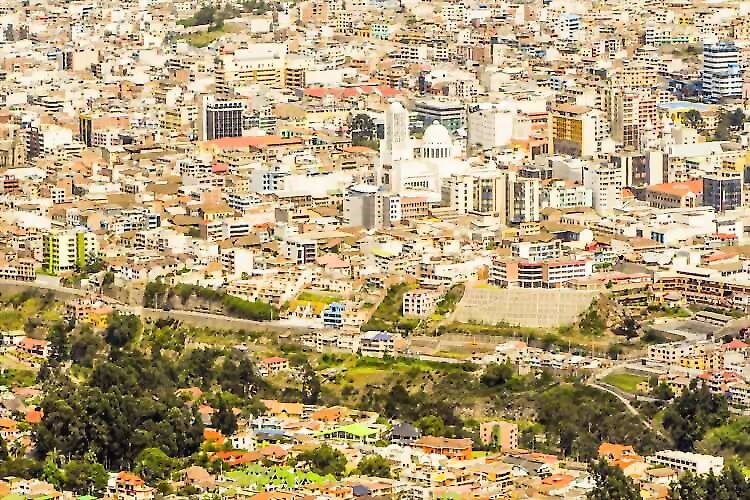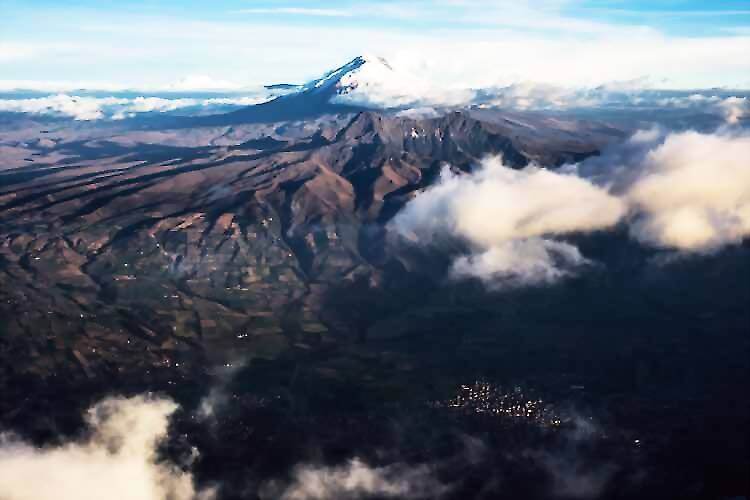
views
One of the most fascinating borders I’ve ever crossed was the one between Peru and Ecuador. The year was 1971, and there were three of us: Salvador and Margaret, my best friend and her boyfriend, and me, just turned 20, filled with a sense of adventure, afraid of nothing, improvident and out to grab life with both hands. By now we were six months into the adventure, having passed through Brazil and Peru, well-known and popular tourist destinations then as well as now. But it was little Ecuador that was to hold us captive, a country that seldom makes the headlines as a tourist destination.
It was like a line drawn in the sand, that border: nothing gradual, nothing subtle. Like stepping into sunshine from a dank grey cloud. We’d crossed the desert to get here, endless miles of sand to the right and sea to the left, a dusty, thirsty ride on the backs of trucks. This is what I wrote back then, of a country so fascinating that it deserves two blog posts.
A stamp in the passport at Huaquillas, and another world opens up.
Huaquillas: crowded and bustling with a very commercial atmosphere: market stalls with fruit spilling out onto the roads, people calling out and ringing bells, gaudy bazaars, money changers with briefcases handcuffed to their wrists, roadside hucksters frying potatoes or meat balls or roasting corn. There’s an almost tropical energy in the atmosphere. But we’re not staying here.
The next day, hitching out to the coastal town of Machala is the easiest thing in the world. We get a ride almost immediately from a friendly driver of a bus crowded with happy singing passengers. He wants no fare from us. And then, the next day, up into the mountains; a drive through lush green hills covered with banana trees, Ecuador being the world’s largest banana exporter. Tropical villages of wooden houses on stilts, reminiscent of Guyana, and on upwards over a bumpy road, little more than a track, into the mountains, through quaint whitewashed villages populated by Indios. These Indios are less aloof, more forthcoming than their Peruvian cousins, more willing to talk to strangers; giggling shyly and covering their mouths with their hands.
At every stop women and children board the bus selling little parcels of roasted corn, potatoes, eggs,, large flat green beams called avas, glasses of orange or lime juice. By the time we reach the picturesque little city of Cuenca, Ecuador’s third largest, with its cobblestone roads, colonial buildings and springtime climate, we’re completely, hopelessly in love with Ecuador and its people.
On the bus to Cuenca is an American couple, Marty and Gloria, who’ve been in Ecuador four months checking out every nook and cranny. They tell us tales of hidden mountain lakes, gorgeous adobe villages, glorious beaches, spectacular mountains. We’re beginning to regret we only have a one-month visa. The mountains here are so different from the stark cold Sierra of Peru.
The geographically youthful Andes form a jagged backbone to South America, stretching 4400 miles from Venezuela and Colombia in the north down to Bolivia and Chile in the south. Here in Ecuador the Sierra splits into two distinct cordilleras, 25 to 40 miles apart, with a 250 mile long stretch between them. Like the two sides of a ladder, these mountainous rims are connected by eight hills, “rungs”, between which lie fertile valleys 7000 to 9000 feet high. It is in these basins that more than half of Ecuador’s five million odd natives live.
Travelling along the Pan-American Highway to Quito is pure pleasure. Hitching continues to be as easy as sticking put a thumb to the traffic: a vehicle stops in a matter of minutes. Standing or sitting in the backs of pickup trucks and lorries, the wind whipping our hair into tangles and tingling our skin with coolness, we drive through verdant valleys patchworked with fields of wheat, barley oats and corn, through grasslands dotted with cattle and sheep. We can’t help but compare with Peru. We remember waiting for hours in the freezing cold, the stark nakedness of the Peruvian landscape, so barren and desolate. The mountains there are magnificent, but clustered as they are one behind the other and looming so close above you, it’s hard to give each one its due.
Here each mountain stands out in its personal glory at the edge of its own valley, a living, vibrant guardian of the villages clustered at its feet like devotees before a Master. Each has its own personality. You can almost feel the power behind the motionless, watching bulk. They are alive, as the Indios who pray to their spirits are well aware.

Ambato, built around the banks of the river Ambaro, is Ecuador’s Garden City. As its name implies it’s an attractive town with a delightful, sunny climate. We check out the local market an amazing variety of fresh fruits and vegetables sold by smiling Indio women in crisp white embroidered blouses and full skirts. The food market brims with fruit and vegetables, beans and corn, open-air restaurants with bubbling cauldrons of soup, and stews of that typical Andean delicacy, guinea pig, their lifeless, skinned bodies lying in pans of sizzling oil. We sample the fruit juices and wish they grew the mouth-watering naranjilla in Guyana: a little round fruit somewhat like a tomato in texture (it belongs to the same family) but with a bright orange skin and lime-green jelly-like flesh, in flavour it surpasses a mixture of orange, lemon and pineapple.

From Ambato it’s on to Quito and a clear view of the dormant Chimborazo, the highest of Ecuador’s thirty volcanoes at 20577 feet, among the highest in the world. It stands apart in proud majesty, the way it has watched over the valley for centuries. Its last known eruption is believed to have occurred around 550 CE.[5]
And then, at last, Quito, population 400000, at nearly two miles high is the second highest capital city n the world. It sits in a magnificent setting of soaring mountain peaks overshadowed by Cotopaxi.
And as we approach Quito the unrivalled volcano Cotopaxi comes into view. From a distance he stands in a fairyland kingdom if wispy white clouds and streaks of pink and purple sky, his flanks sloping in a perfect cone and around his crater a blinding white cape of snow glistening in the sunlight.
Cotapaxi is a mountain god commanding the entire valley. It’s impossible to take our eyes from the magnificent sight and the nearer we get the more aware we grow of his powers, until we’re right beneath him, little insects crawling around the feet of a mighty immobile giant. We gaze back in wonder as we enter Quito; but then new wonders open up.
The name Ecuador is Spanish for Equator and the country calls itself the Middle of the World. The capital Quito is within 15 miles of Latitude Zero, but its valley is high enough to give it an English springtime climate, warm and sunny days and chilly nights.
On a quiet Sunday afternoon we drive through the charming old section of town, cobbled streets winding steeply through between spick-and-span rows of white-brick and abode houses with wooden doors and balconies all painted in an identical shade of blue, all with sloping red-tiles roofs.
On Monday, first thing it’s a check at the Posta Restante for mail, find a whole pile of letters that have been waiting weeks for us, our first mail since leaving home months ago. Then through the narrow streets crowded with people and too much traffic to the Plaza 24 de Mayo, full of milling Indios on their way to and from the market. Past food stalls and fruit juice stands, stalls selling sandals made of rope and car-tyre soles, furniture and straw mats and baskets.
In a corner of the plaza we board the chockfull bus for Chillogallo, a village on the outer fringes of Quito, about 25 minutes of bouncing along bad roads, past women scrubbing clothes on the banks of a river and men jogging along with heavy loads on their backs, into the heartland of Ecuador, a place to grow roots that will keep us bound to this wonderful country. At least for a little while. No more border crossings for now; this place is too good to be true.
(Photo courtesy: Shutterstock)



















Comments
0 comment